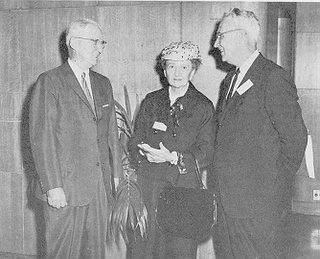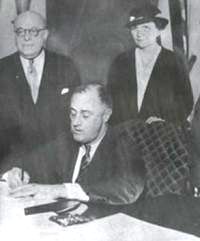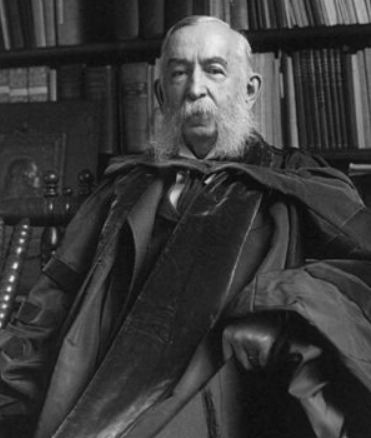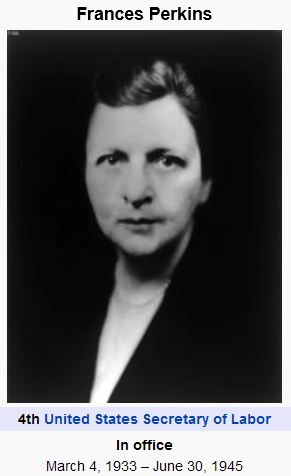Contents
- Introduction
- Preface
- Overview
- Relief Valve
- LECTURE 1: Why We Are In The Dark About Money
- LECTURE 2: The Con
- LECTURE 3: The Vatican-Central to the Origins of Money & Power
- LECTURE 4: London The Corporation Origins of Opium Drug Smuggling
-
LECTURE 5: U.S. Pirates, Boston Brahmins Opium Drug Smugglers
-
THE BOSTON BRAHMINS
- Clipper Ships
- The Boston Money Tree
- John Perkins Cushing
- Abiel Abbott Low
- William H. Russell and Samuel Russell
- The Combination Russell, Jardine, and Matheson
- Russell Sturgis
- Colonel Thomas Handasyd Perkins
- The Perkins Family
- Frances Perkins--The Only Good Brahmin
- American House of Russell and Co.
- Harvard Corporation
- Opium to Brahmins to Yale to CIA
- Forbes Family I
- Warren Delano
- Hope & Co. - Baring Brothers Bank
- John Jacob Astor
- Taft Family
- 1924 America's 1% Exposed
- Proof FDR Knew About his Grandfather's connection with Opium China Trade
- Forbes - John Kerry Family II
- George Bush Family Origins in Opium Drug Smuggling
- Black Market Bones
- Thuggee Barbara Bush Family
- Thuggee Bush Family and the CIA
- John Quincy Adams and the Chinese Opium Trade
- The Ammidons
- Augustine Heard
- Joseph Coolidge IV
- Lowell Family
- Pirates Profiteers Banksters Traders Transfers
- Pirates
- White Slavers, Cargo, Property, Auctions, Amazing Grace
- $ Colonial Labor: Indentured Servants
- England to Philadelphia Slave Trade and Opium
- Extract from Charter of Freedoms and Exemptions to Patroons 1629
- The Definitive Treaty of Peace
- Pennsylvania Charter of Privileges 28 October 1701
- Opium Trade -- American Drug Smuggling Pirates
- Opium In America
- 1% Power Elite Networks
- 1% Elite Networks Bush & The CIA
- BEFORE Skull & Bones
- SKULL AND BONES
- Caribbean Pirates in the American South
- Who Were the Tories
- The Golden Age of Imperialism Opium Act 1908
- Global Dominance Groups
- The New World Order
- Characteristics of Fascism
- War on drugs
- Lecture 5 Objectives and Discussion Questions
-
THE BOSTON BRAHMINS
- LECTURE 6: The Shady Origins Of The Federal Reserve
- LECTURE 7: How The Rich Protect Their Money
- LECTURE 8: How To Protect Your Money From The 1% Predators
- LECTURE 9: Final Thoughts
 Frances Perkins was the only Brahmin who knew how the family had made it's money, knew where the skeletons were buried, and cared enough about the world to actually make it a difference - for all of us!
Frances Perkins was the only Brahmin who knew how the family had made it's money, knew where the skeletons were buried, and cared enough about the world to actually make it a difference - for all of us!
[ THINK MINIMUM WAGE ]
We don't have Republicans or Democrats to thank for child labor laws or workers rights, like the 40 hour work week - we actually have Frances Perkins for that.
Can you imagine anyone getting this done today in 2014? I think Elizabeth Warren is the closest one we have to Frances.
Frances Perkins (born Fannie Coralie Perkins; April 10, 1880 – May 14, 1965 was the U.S. Secretary of Labor from 1933 to 1945, and the first woman appointed to the U.S. Cabinet. As a loyal supporter of her friend, Franklin D. Roosevelt, she helped pull the labor movement into the New Deal coalition. She and Interior Secretary Harold L. Ickes were the only original members of the Roosevelt cabinet to remain in office for his entire presidency. During her term as Secretary of Labor, Perkins championed many aspects of the New Deal, including the Civilian Conservation Corps, the Public Works Administration and its successor the Federal Works Agency, and the labor portion of the National Industrial Recovery Act. With the Social Security Act she established unemployment benefits, pensions for the many uncovered elderly Americans, and welfare for the poorest Americans. She pushed to reduce workplace accidents and helped craft laws against child labor. Through the Fair Labor Standards Act, she established the first minimum wage and overtime laws for American workers, and defined the standard forty-hour work week. She formed governmental policy for working with labor unions and helped to alleviate strikes by way of the United States Conciliation Service, Perkins resisted having American women be drafted to serve the military in World War II so that they could enter the civilian workforce in greatly expanded numbers.
EXAMPLE OF OUR FABULOUS PAST AND THE CCC
In fact the CCC did a better job with literacy than the Department of Education which should have been shut them down in 1945. People realized their gov't jobs were in jeopardy so the department of education mounted a campaign to kill off the CCC and they did. Sadly for America they won the battle - we still have the incompetent department of noneducation. People realized their gov't jobs were in jeopardy so the department of education mounted a campaign to kill off the CCC and they did. Sadly for America they won the battle - we still have the incompetent department of noneducation.
FRANCES PERKINS AND THE RUSSELL SAGE FOUNDATION
Networks
Groups - Assurance / Insurance - Trusts - Foundations
- Peabody, Slater and Russell Sage Foundations
- Cecil Rhodes Trust, Russell Trust
- Carnegie Institution
- Warren Delano, Jr., Chief of RUSSELL TRUST operations in Canton, CHINA.
Skull and Bones - - the Russell Trust Association - - was first established among the class graduating from Yale in 1833. Its founder was William Huntington Russell of Middletown, Connecticut.- The Russell family was the master of incalculable wealth derived from the largest U.S. criminal organization of the nineteenth century: Russell and Company, the great opium syndicate.
Skull and Bones members would go on to be the first Presidents of the University of California, John Hopkins, and Cornell University.
They helped to found and set the direction for the Carnegie Institution, the Peabody, Slater, and Russell Sage Foundations, as well as the American Economic Association, the American Historical Association, and the American Psychological Association. Bonesmen Gilman, White, and Rockefeller have also had considerable influence on the development of public education. The Daniel/Gilman/White trio was also responsible for the founding of the American Economic Association, the American Chemical Society and the American Psychological Association. Through their influences on John Dewey and Horace Mann, this trio continues to have an enormous impact on education today.
For those who would downplay the role of Skull and Bones in the development of the United States, consider that members of this Order designed the institutions which have been responsible for teaching Americans their history, defining sanity and normalcy, and telling Americans what and how to think.
The Russell Sage Foundation, which specializes in "social control" programs, was founded by Bonesmen.
1902 Rockefeller General Education Board founded, with the objective of racial amalgamation and abolition of difference between sexes. The overt stated objective: “the promotion of education in the United States without distinctions of sex, race or creed.”
Incorporators include Frederick T. Gates (Rockefellers right-hand man), Daniel Coit Gilman (vp Peabody Fund and Slater Fund, president of University of California (1872) and Johns Hopkins (1875), incorporator and first president of the Carnegie Institute and original incorporator of Russell Sage Foundation.
Gilman was first president of the Carnegie Institution and involved in the founding of the Peabody, Slater and Russell Sage Foundations.
Among the leading functions of the Russell Sage Foundation today is the maintaining of a centralized tracking of the finances of all the large tax-exempt foundations in the United States. The Peabody Foundation, the Slater Foundation and several of the Rockefeller foundations were all either started by members of the Order or have been dominated by Bonesmen from their inception. Other major family funds, like the Ford Foundation and the Carnegie Endowment, were wrestled from family control by the Skull & Bones apparatus. During the tenure of McGeorge Bundy, two members of the Ford family resigned from the Ford Foundation in disgust over the direction in which Bundy had taken the philanthropic agency.
THE FIGHT BETWEEN SLAVE LABOR
AND THE CORPORATIONS WHO USE THEM
bOSTON bRAHMIN
TRIES TO PROTECT PEOPLE FROM PIRATES
In 1909 FRANCIS PERKINS received a fellowship from the Russell Sage Foundation and earned her M.A. in economics and sociology from Columbia University. From 1910-1912 Perkins served as Secretary of the New York Consumers' League and taught at Adelphi College. She worked for industrial reform, women's suffrage, and the passage of a fifty-four hour work week bill in the New York legislature. After witnessing the Triangle Shirtwaist Company fire of 1911 in which 146 workers died, Perkins took a position with the Committee on Safety of the City of New York and worked there until 1915. On September 26, 1913 she married Paul Caldwell Wilson, an economist for the Bureau of Municipal Research in New York. During the 1920s Wilson suffered increasingly mental illness. From 1930 until his death in 1952 he spent most of his time in institutions. The couple had two children; the first died in infancy and the second was a daughter born in 1916 named Susanna Winslow Wilson. In 1918 Perkins was appointed to the New York State Industrial Commission, becoming the highest paid state employee in the United States with a salary of $8,000. From 1920-1922 she served as Executive Secretary of the Council on Immigrant Education before returning to work for the Industrial Commission from 1922-1928. From 1928-1933 Perkins was Industrial Commissioner for New York State. From 1933-1945 Perkins was the Secretary of Labor in Franklin D. Roosevelt's cabinet. She was the first woman to hold a position in a presidential cabinet. She helped draft the Federal Emergency Relief Act, the Civilian Conservation Act, the Social Security Act, and other important legislation.
She knew best that the family business was all about selling smuggling opium - going to war to sell drugs and turning the workforce into slaves for the company. In 1909 she received a fellowship from the Russell Sage Foundation.
Frances Perkins (born Fannie Coralie Perkins, (April 10, 1880 May 14, 1965) was a descendant of a Revolutionary War patriot named Otis.
She was the first female United States Cabinet member, serving as Secretary of Labor under President Franklin D. Roosevelt from 1933 to 1945. As a loyal supporter of her friend, Franklin D. Roosevelt, she helped pull the labor movement into the New Deal coalition. She was an original member of the Roosevelt cabinet who remained in offices for his entire presidency. She is buried in Newcastle Cemetery on River Road, in Newcastle, Lincoln County, Maine with some of her ancestors.
During her term as Secretary of Labor, Perkins championed many aspects of the New Deal, including the Civilian Conservation Corps, the Public Works Administration and its successor the Federal Works Agency, and the labor portion of the National Industrial Recovery Act.
With The Social Security Act she established unemployment benefits, pensions for the many uncovered elderly Americans, and welfare for the poorest Americans. She pushed to reduce workplace accidents and helped craft laws against child labor. Through the Fair Labor Standards Act, she established the first minimum wage and overtime laws for American workers, and defined the standard 40-hour work week. She formed governmental policy for working with labor unions and helped to alleviate strikes by way of the United States Conciliation Service.
 SHE WAS TRAINED AS A SOCIAL WORKER. IN HER FIRST JOB OUT OF GRADUATE SCHOOL, SHE WITNESSED THE INFAMOUS TRIANGLE SHIRTWAIST FACTORY FIRE, AND HER LIFE WAS NEVER THE SAME.
SHE WAS TRAINED AS A SOCIAL WORKER. IN HER FIRST JOB OUT OF GRADUATE SCHOOL, SHE WITNESSED THE INFAMOUS TRIANGLE SHIRTWAIST FACTORY FIRE, AND HER LIFE WAS NEVER THE SAME.
AT THAT POINT, SHE DEDICATED HER LIFE TO WORKER SAFETY ISSUES. SHE BEGAN BY WORKING FOR NONPROFIT ORGANIZATIONS, BUT IN 1918 SHE WAS APPOINTED BY NEW YORK GOVERNOR AL SMITH AS THE FIRST FEMALE MEMBER OF THE STATE INDUSTRIAL COMMISSION, BECOMING CHAIR IN 1926.
WHEN FDR BECAME GOVERNOR, HE APPOINTED HER AS THE STATE INDUSTRIAL COMMISSIONER.
 SHE WAS IN THE PERFECT POSITION TO SEE THE DEPRESSION DEVELOP AND PREDICTED IT AHEAD OF TIME. SHE GAVE GREAT THOUGHT TO HOW TO HELP WORKERS. THEREFORE, SHE IMPLEMENTED POLICIES NEVER BEFORE CONSIDERED, SUCH AS
SHE WAS IN THE PERFECT POSITION TO SEE THE DEPRESSION DEVELOP AND PREDICTED IT AHEAD OF TIME. SHE GAVE GREAT THOUGHT TO HOW TO HELP WORKERS. THEREFORE, SHE IMPLEMENTED POLICIES NEVER BEFORE CONSIDERED, SUCH AS
- COLLECTING EMPLOYMENT DATA;
- EMPLOYMENT OFFICES TO HELP WORKERS FIND JOBS;
- UNEMPLOYMENT INSURANCE;
- MINIMUM WAGE;
- THE 40 HOUR WORK WEEK;
- ELIMINATION OF CHILD LABOR;
- AND FIRE AND SAFETY STANDARDS, INCLUDING NO SMOKING, FIRE DRILLS, SPRINKLERS, FIRE ESCAPES, BUILDING EXITS, OCCUPANCY LIMITATIONS, WASHING AND RESTROOM FACILITIES, CLEAN WATER, AND MOST IMPORTANTLY, WITH SERIOUS ENFORCEMENT INCLUDING FACTORY INVESTIGATIONS AND PENALTIES.
DURING HER TENURE AS SECRETARY OF LABOR, PERKINS ACHIEVED LANDMARK REFORMS, INCLUDING GIVING WORKERS THE RIGHT TO ORGANIZE UNIONS AND BARGAIN COLLECTIVELY, ESTABLISHING A MINIMUM WAGE AND MAXIMUM WORKWEEK, AND SPEARHEADING THE DEVELOPMENT OF THE U.S. SOCIAL SECURITY SYSTEM. AS FORMER SECRETARY OF LABOR WILLARD WIRTZ PUT IT, “[E]VERY MAN AND WOMAN WHO WORKS AT A LIVING WAGE, UNDER SAFE CONDITIONS, FOR REASONABLE HOURS, OR WHO IS PROTECTED BY UNEMPLOYMENT INSURANCE OR SOCIAL SECURITY, IS HER DEBTOR.”
BY THIS TIME, PERKINS WAS CONSIDERED THE NATION'S TOP EXPERT IN EMPLOYMENT.
IT'S NO WONDER FDR TOOK HER WITH HIM TO WASHINGTON WHEN HE BECAME PRESIDENT IN 1932. THE TRUTH WAS THAT HE REALLY HAD NO AGENDA - BUT PERKINS DID, AND SHE MADE HIS ACCEPTANCE OF IT HER CONDITION FOR TAKING THE JOB.

HE APPOINTED HER SECRETARY OF LABOR, A POSITION SHE HELD FOR 12 YEARS, LONGER THAN ANY OTHER.
DURING HER TERM AS SECRETARY OF LABOR, PERKINS CHAMPIONED MANY ASPECTS OF THE NEW DEAL, INCLUDING THE CIVILIAN CONSERVATION CORPS, THE PUBLIC WORKS ADMINISTRATION AND ITS SUCCESSOR THE FEDERAL WORKS AGENCY, AND THE LABOR PORTION OF THE NATIONAL INDUSTRIAL RECOVERY ACT.
WITH THE SOCIAL SECURITY ACT SHE ESTABLISHED UNEMPLOYMENT BENEFITS, PENSIONS FOR THE MANY UNCOVERED ELDERLY AMERICANS, AND WELFARE FOR THE POOREST AMERICANS. SHE PUSHED TO REDUCE WORKPLACE ACCIDENTS AND HELPED CRAFT LAWS AGAINST CHILD LABOR.
“Where the 9-5 working hours came from?”
During the British Industrial Revolution (18th to 19th Century), in order to increase productivity in the factories, “work shift” were created. As you may imagine those shift were not the same as the one of today, in fact was not uncommon to work 12-16 hours per day. If you walked around one of those factories you wouldn’t not be surprised to see children working side by side with their parents. Then in 1810, a social Welsh social reformer called Robert Owen, played an important role by campaigning the slogan:
EIGHT HOURS LABOR – EIGHT HOURS RECREATION – EIGHT HOURS REST
Owen was one of the founders of Utopian socialism and cooperative movement. In 1824, Owen traveled to America to invest his fortune in an experimental 1,000-member colony, called New Harmony. Owen’s utopian community would create a “superior social, intellectual and physical environment” based on his ideals of social reform (happiness, enlightenment, and prosperity through education, science, technology, and communal living). Owen was motivated to buy the town in order to prove his theories were viable and to correct the troubles that were affecting his mill-town community New Lanark (Scotland).
Whether or not Owen impact was the most contributing one, but we know that by 1926, Henry Ford implemented the eight hour working day. As you may expect, the productivity in his factories increased and Ford had a considerable increase of his profits.

